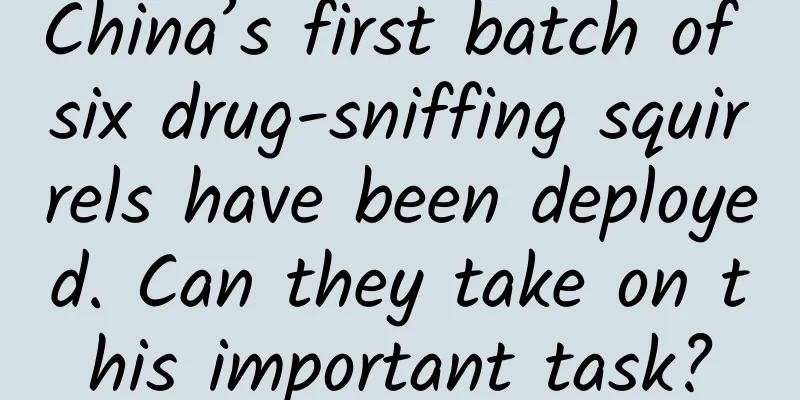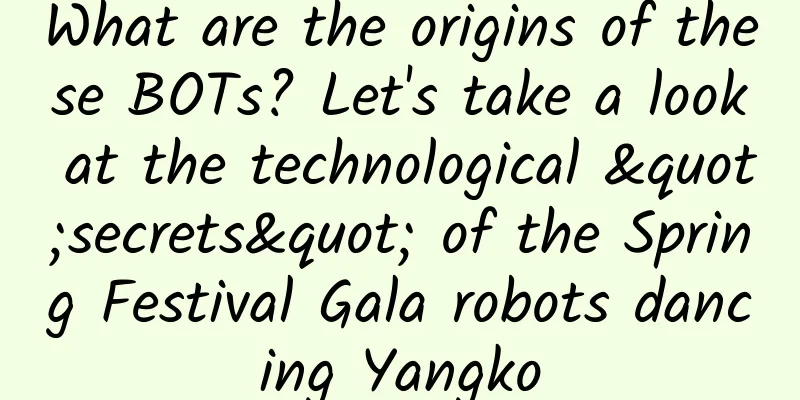Audi and Hyundai join forces to help the auto industry break away from the era of each taking care of its own business

|
Recently, foreign media reported that Audi announced that it had reached an agreement with Hyundai Motor to cooperate in the development of fuel cell vehicles. As part of the agreement, some technologies of Hyundai ix35 fuel cell vehicles and its latest product NEXO will be licensed to Audi and other brands under Volkswagen. Audi R&D chief Peter Mertens said in a statement that cooperation is a wise move to achieve breakthroughs in fuel cell technology. Audi is responsible for the development of fuel cell technology for the Volkswagen Group and will make full use of Hyundai's fuel cell component supply chain. In addition, Hyundai Motor also stated in a statement that the two automakers have reached a multi-year patent cross-licensing agreement that covers a wide range of fuel cell electric vehicle components and technologies, covering and benefiting subsidiaries of both companies. Audi has been committed to the research of fuel cells for nearly 20 years, and released the Audi h-tron quattro concept car in 2016, which is equipped with the fifth-generation hydrogen fuel cell power system. Within the Volkswagen Group, Audi AG has assumed the responsibility for the development of fuel cell technology and is currently developing the sixth-generation product. The group's fuel cell research and development center is located in the Neckarsulm plant. In the next decade, Audi will produce a small batch of SUV models powered by fuel cells. It is difficult for a single soldier to fight At present, it has become an industry consensus that hydrogen fuel cell vehicles are close to the ideal value of zero emissions in the new energy path. However, the high R&D and production costs and infrastructure construction costs of hydrogen fuel cell vehicles are still in front of everyone, and this is also true for Hyundai. In order to better cross the initial stage of burning money, cooperation has become the most ideal way. How to solve the high cost is an inevitable issue for every company that wants to get involved in hydrogen fuel cell vehicles. Representative fuel cell vehicle products, such as Toyota Mirai, are priced at US$69,000 (approximately RMB 450,000) and Honda Clarity, are priced at US$60,000 (approximately RMB 390,000), which are much higher than other vehicles of the same level with other power forms. In terms of infrastructure, according to Toyota's previous cost calculations, the construction cost of each hydrogen refueling station is about 1.3 million US dollars (about 8.4 million RMB). In addition, fuel cell durability is also a technical challenge. For passenger cars, the generally recognized indicator in the industry is to run for 5,000 hours at a performance degradation of 10%, but currently, it can only reach 3,000 to 4,000 hours. It is also very difficult to realize profits now. The industry believes that it will take 30,000 hydrogen-powered vehicles to achieve profitability. The profit cycle of hydrogen-powered vehicles will be relatively long, and costs can only be reduced after a certain sales scale, so the initial investment will be relatively large. In the past, Toyota once promoted the strategy of popularizing hydrogen energy in China. In order to promote hydrogen fuel vehicles, Toyota has done its best. From January 2015 to 2020, Toyota has made 5,680 patents for hydrogen fuel cell vehicles public for free, and everyone can use its advanced technology accumulated over the past 20 years for free. However, it has achieved little success over the years. Not to mention Hyundai Motor. Such cooperation is also necessary for Volkswagen. Last year, Volkswagen ranked first among all automobile companies in terms of R&D investment, reaching 13.672 billion euros, 5.988 billion euros more than GM, which ranked second with 7.684 billion euros. As we all know, from the raw materials to the delivery to consumers, a car involves a total of materials, manufacturing, technology, trade, finance, etc. Due to the very long characteristics of the automobile industry chain, the R&D investment of automobile companies is usually surprisingly high, and Volkswagen, with its numerous and complex brands and businesses, has stretched its R&D front to a very long distance. Today, Volkswagen has been controlling the proportion of R&D investment. It is not difficult to find that in 2017, Volkswagen Group's R&D costs mainly included the creation of new models, the electrification of the model lineup, the development of more efficient engines, and the advancement of digitalization. The percentage of R&D expenditure to automobile business sales revenue has been reduced to 6.7%. At Volkswagen's annual meeting last year, it was reiterated that "the proportion of capital expenditure and R&D will be reduced to 6% by 2020 at the latest." Although Volkswagen has gradually digested the impact of the "emissions scandal", they also found that they seem to need to effectively control the excessive investment in R&D funds. Volkswagen once publicly stated: "Volkswagen Group's R&D investment seems to be "overheated" for some projects. We should not only focus on the amount of capital investment, but also on the output of the R&D investment."
In the specific cooperation, Nissan leads the development of fuel cell stacks, and Daimler is responsible for combining fuel cell stacks with engine and other components to form a feasible fuel cell system. According to the plan at the time of signing the contract, the cooperation team will launch affordable, mass-produced fuel cell vehicles as early as 2017. However, it is now clear that this goal has not been achieved as scheduled. Mercedes-Benz has launched fuel cell vehicles again and again, Ford has not seen any fuel cell vehicles, and Nissan is still at the prototype stage. The clarity of all aspects of the research and development of fuel vehicles has been cast a shadow. Cooperation is already like this, let alone individual combat. The general trend of group It is worth mentioning that in addition to Toyota and BMW, which have already cooperated in the field of fuel cell vehicles, Honda is also working with GM to develop key systems for fuel cell vehicles. The partners plan to jointly produce important components for fuel cell vehicles in the United States by 2020. When the tide is blown up by the hurricane, people who go into the water to fish cannot hear the sound on the shore. At this time, in order to reduce the risk of blindness, you can only work together. Today, we are at the forefront of the great changes of the times. This article does not intend to discuss the advantages and disadvantages of technical paths. How automobile companies choose new energy paths has its own strategic ideas and plans, but what cannot be escaped is the general trend of forming a group, even in the field of electric vehicles. In the process of conquering the fortress of electric vehicles, due to the extremely difficult and arduous battery technology, supporting facilities and scale effects, automakers will also pin their hopes on alliances. Among the three largest Japanese automakers, Nissan has long been in the forefront of the electric vehicle field by forming an alliance with Renault. Toyota has also jointly established an electric vehicle business department with Mazda and other automakers to develop advanced technologies such as solid-state batteries and integrate its electric vehicle parts business with Denso. As for Honda, which entered the market a little later, it is only natural for it to join hands with GM. In the past two days, GM and several companies signed the "Transportation Electrification Agreement" in the United States, including the Chinese brand BYD. The agreement aims to call on related industries, including automakers, to work together towards the goal of electrification of automobiles and transportation. Standing at the forefront of the changing times, the era of everyone minding their own business has long passed, and now we are entering an era of group cooperation. Only great unity can lead to a win-win situation. As a winner of Toutiao's Qingyun Plan and Baijiahao's Bai+ Plan, the 2019 Baidu Digital Author of the Year, the Baijiahao's Most Popular Author in the Technology Field, the 2019 Sogou Technology and Culture Author, and the 2021 Baijiahao Quarterly Influential Creator, he has won many awards, including the 2013 Sohu Best Industry Media Person, the 2015 China New Media Entrepreneurship Competition Beijing Third Place, the 2015 Guangmang Experience Award, the 2015 China New Media Entrepreneurship Competition Finals Third Place, and the 2018 Baidu Dynamic Annual Powerful Celebrity. |
<<: As LeEco's non-listed businesses shrink, can it preserve its small TV ecosystem?
Recommend
Home appliances require direct current, but why do we use alternating current at home?
We know that electricity can be divided into alte...
Soul product analysis!
Contemporary young people use social software - y...
SIA: Global semiconductor sales will grow to $574 billion in 2022, with a compound annual growth rate of 6.67%
The Semiconductor Industry Association (SIA) rele...
Should I upgrade to iOS 13.6.2 after Apple pushes it? If my phone still works, I suggest not to upgrade.
Not long ago, Apple pushed the iOS 13.5.1Beta ver...
How to write a short video script? These templates can be applied directly!
Although a short video is only 60 seconds long, e...
How much does it cost to join a ticketing app in Liaoyuan?
For entrepreneurs, although mini program developm...
7 major channels for promoting Douyin and increasing followers!
If it is an enterprise account, it is recommended...
The grand sedan chair in "Ning An Ru Meng" is carried by eight people! The secrets of the "luxury cars" of ancient nobles are revealed
Fan-shot stills of the drama "Ning An Ru Men...
Is it safe to use the hand sanitizer in public toilets?
I wonder if there is anyone like me who has a sen...
Case Analysis: How to use the AARRR model to increase user growth?
This article takes Luckin Coffee as an example. I...
A complete guide to applying for Android App Market debuts, privileged gift packages, and promotional activities!
If your products have coupons, discount coupons, ...
How much does it cost to customize the Ningde Supplements Mini Program? What is the price quote for the Ningde Supplements Mini Program customization?
There is no doubt that the topic of mini programs...
What does depression do to the brain?
This article was reviewed by Zhao Wei, deputy chi...
Android Wear summary: Making smartwatches cool
David Singleton, Director of Engineering at Google...









